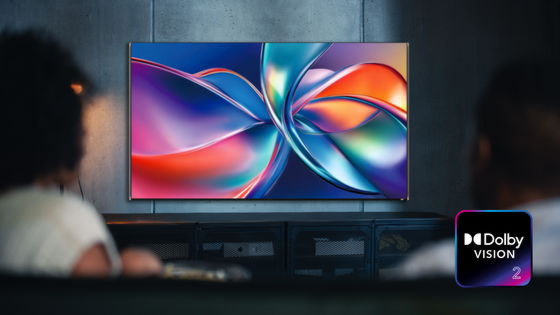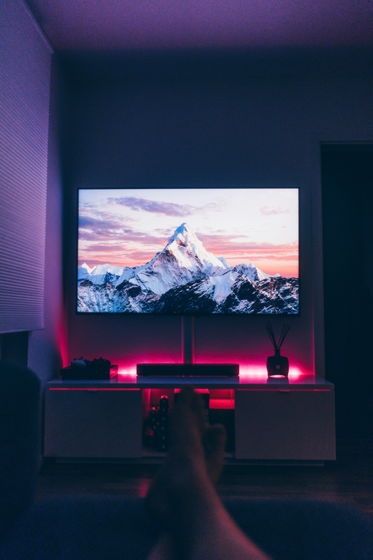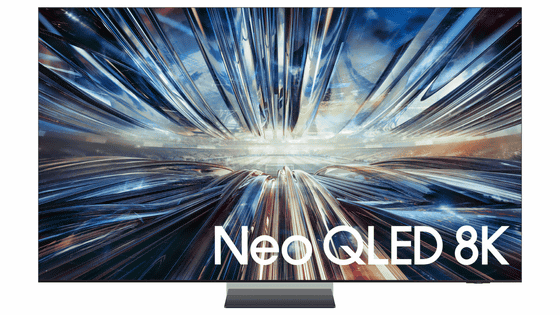Dolby Announces 'Dolby Vision 2,' Next-Generation HDR Format with Enhanced AI and 'True Motion' Smoothing

Dolby Laboratories has announced Dolby Vision 2 , the next-generation standard for
Dolby Unveils Dolby Vision 2: A New Era for TV Picture Quality | Dolby Newsroom
https://news.dolby.com/en-WW/253671-dolby-unveils-dolby-vision-2-a-new-era-for-tv-picture-quality/

Dolby Vision 2 goes beyond HDR with more AI and 'authentic motion' smoothing | The Verge
https://www.theverge.com/news/768842/dolby-vision-2-launch-content-intelligence-tone-mapping
The new Dolby Vision 2 HDR standard is probably going to be controversial - Ars Technica
https://arstechnica.com/gadgets/2025/09/the-new-dolby-vision-2-hdr-standard-is-probably-going-to-be-controversial/
On September 2, 2025 local time, Dolby Laboratories announced the next-generation HDR format, 'Dolby Vision 2.' Dolby Vision 2 features a more powerful video engine than the previous generation technology, Dolby Vision, and when combined with Dolby Vision's extensive content ecosystem, it further expands the possibilities of television.
Dolby Vision 2 offers a new tool for better connecting the creative suite with the viewer's living room: 'Content Intelligence.' This allows Dolby Vision 2 to faithfully and automatically optimize your TV for a more compelling viewing experience based on the content you're watching and where you're watching it. Content Intelligence also includes AI capabilities to optimize content for your device and viewing environment.
Examples of content intelligence include:
・Precision Black
It makes images incredibly clear and sharp in any viewing environment, without compromising artistic intent, reducing consumer complaints that the image is 'too dark.'
・Light Sense
Fine-tune picture quality through advanced ambient light detection and new reference lighting data from content sources to optimize your TV for an ideal viewing experience.
Sports and game optimization
It introduces new enhancements such as white point adjustment and motion control designed specifically to address the unique needs of sports and gaming.

Built on content intelligence, Dolby Vision 2 introduces new tone mapping that takes advantage of the latest television advancements. Today's televisions are brighter and more colorful than ever before. Bidirectional tone mapping gives creators new controls to get the most out of these advanced displays. This enables high-performance televisions to deliver greater brightness, sharper contrast, and richer, more saturated colors while faithfully reproducing the artist's creative vision.
Dolby Vision 2 extends the capabilities of Dolby Vision beyond HDR, including features like Authentic Motion, the world's first creative-driven motion control tool that delivers a more realistic cinematic feel without unwanted judder on a shot-by-shot basis.
Dolby Vision 2 is available in two grades: standard 'Dolby Vision 2' takes advantage of next-generation core features enabled by the new Dolby Image Engine and content intelligence, while the high-end standard 'Dolby Vision 2 Max' delivers the best picture on the highest performance TVs and offers additional premium features designed to take full advantage of the capabilities of these displays.

Regarding Authentic Motion, a motion control tool for Dolby Vision 2, technology media Ars Technica said, 'TV manufacturers have begun to include motion smoothing features in almost all TVs. This feature basically makes the frame rate of video content appear higher than it actually is, adjusting the judder that can occur when 24 fps video does not map well to a 60 Hz refresh rate TV. Many general viewers love this feature. However, many movie fans dislike the feature, saying that it creates artifacts and makes movie content look like 60 fps home video. Many filmmakers also oppose the motion smoothing feature, saying it undermines their artistic intent. Dolby claims to have solved the above problem by allowing filmmakers to control when and to what extent to utilize software and hardware features on a scene-by-scene basis. However, it is unclear at this time how it works. Will it make a meaningful difference in appearance compared to existing motion smoothing? What benefits does it offer for each scene? What effect does it have on reducing artifacts? '
Related Posts:
in Software, Posted by logu_ii







